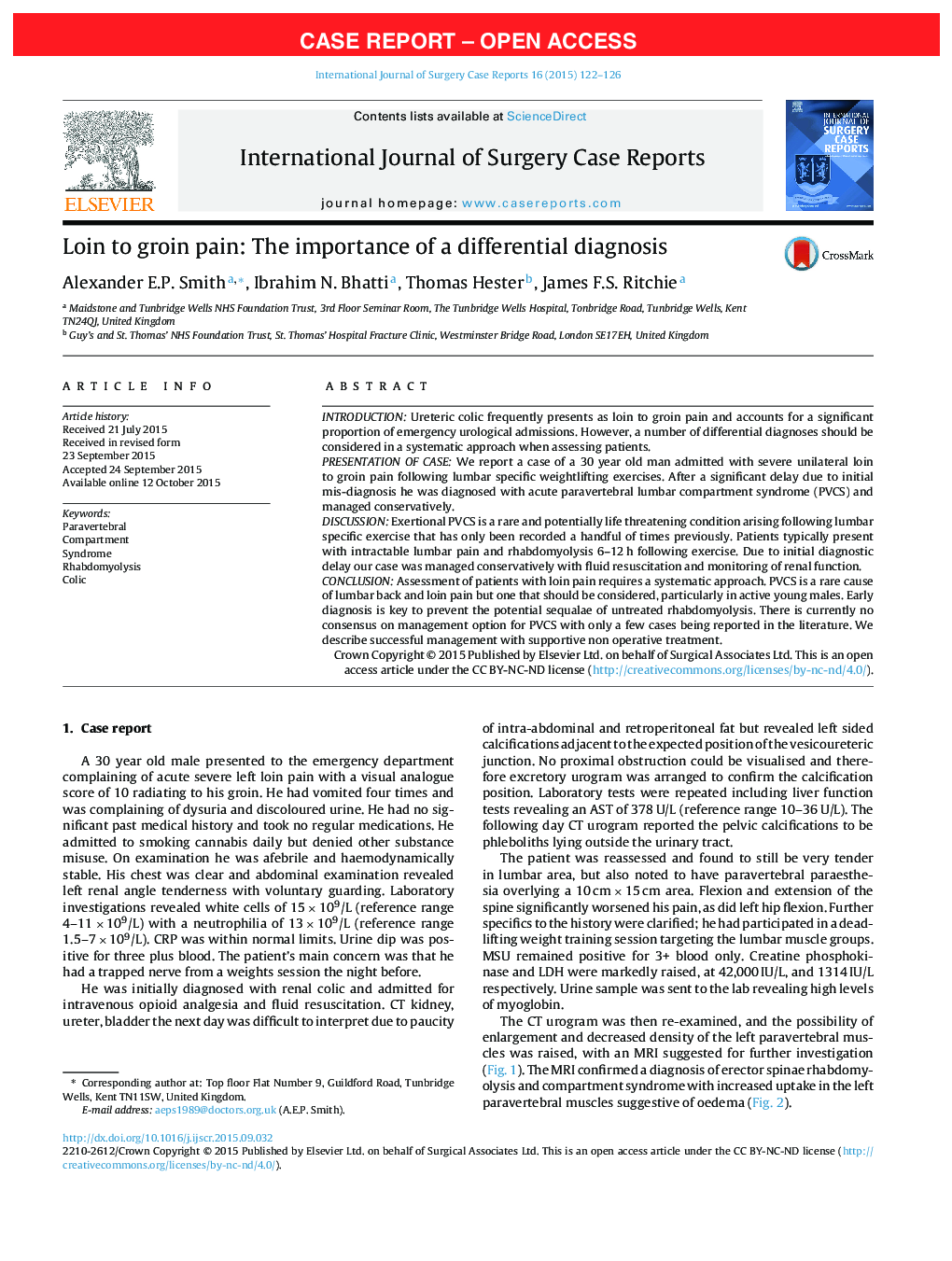| Article ID | Journal | Published Year | Pages | File Type |
|---|---|---|---|---|
| 4288642 | International Journal of Surgery Case Reports | 2015 | 5 Pages |
•We present a rare case of exertional paravertebral lumbar compartment syndrome that was initially misdiagnosed as ureteric colic.•Exertional lumbar paravertebral compartment syndrome typically present with intractable lumbar back pain 6–12 h following lumbar specific exercise.•There is currently no consensus on management with both conservative and surgical techniques used and case reports the only standard for comparison.•Long term back pain is more likely in patients managed conservatively.
IntroductionUreteric colic frequently presents as loin to groin pain and accounts for a significant proportion of emergency urological admissions. However, a number of differential diagnoses should be considered in a systematic approach when assessing patients.Presentation of caseWe report a case of a 30 year old man admitted with severe unilateral loin to groin pain following lumbar specific weightlifting exercises. After a significant delay due to initial mis-diagnosis he was diagnosed with acute paravertebral lumbar compartment syndrome (PVCS) and managed conservatively.DiscussionExertional PVCS is a rare and potentially life threatening condition arising following lumbar specific exercise that has only been recorded a handful of times previously. Patients typically present with intractable lumbar pain and rhabdomyolysis 6–12 h following exercise. Due to initial diagnostic delay our case was managed conservatively with fluid resuscitation and monitoring of renal function.ConclusionAssessment of patients with loin pain requires a systematic approach. PVCS is a rare cause of lumbar back and loin pain but one that should be considered, particularly in active young males. Early diagnosis is key to prevent the potential sequalae of untreated rhabdomyolysis. There is currently no consensus on management option for PVCS with only a few cases being reported in the literature. We describe successful management with supportive non operative treatment.
